Guide for Pediatric Epilepsy: Learning and Managing Epileptic Seizures

Epilepsy is one of the most prevalent neurological disorders globally, affecting individuals of all ages, including children. This condition is characterized by recurring epileptic seizures, which result from abnormal electrical activity in the brain. The manifestation of these seizures varies, ranging from brief lapses of awareness to violent, prolonged convulsions. For children and their families, the diagnosis and management of pediatric epilepsy can be particularly challenging, not only due to the medical complexity of the condition but also because of the far-reaching impact it can have on a child’s cognitive, emotional, and social development.
Understanding Pediatric Epilepsy
Epilepsy in children can be divided into several different pathological forms, with varying causes and severities. Some forms are idiopathic (without an identifiable cause), while others are secondary to factors such as brain injury, infections, or genetic conditions. In many cases, the onset of seizures occurs during early childhood, although it can appear at any age. Epileptic seizures can range from generalized seizures (involving the entire brain) to focal seizures (affecting only one area of the brain), each requiring different management strategies.
According to the World Health Organization (WHO), epilepsy is recognized as a social disease, and this is particularly true for children, who may face a variety of social, psychological, and academic challenges as a result of their condition.
Diagnosis of Pediatric Epilepsy
The diagnosis of epilepsy in children typically begins with a comprehensive medical history and physical examination. Detailed accounts of the child’s seizure episodes, including their frequency, duration, and any triggers, are critical for determining the type of epilepsy and the most appropriate treatment. This is often followed by diagnostic tests such as:
Electroencephalogram (EEG): This test records the brain’s electrical activity and helps identify abnormal patterns associated with epilepsy.
Neuroimaging (MRI/CT scan): These imaging studies can detect structural brain abnormalities, which may provide clues to the underlying cause of the seizures.
Blood Tests: These can help rule out metabolic disorders, infections, or genetic factors contributing to the seizures.
Management of Pediatric Epilepsy
Managing pediatric epilepsy requires a multi-faceted approach that addresses the medical, psychological, and lifestyle aspects of the condition. The primary treatment options for epilepsy are:
Antiepileptic Drugs (AEDs): Medications are typically the first line of treatment for controlling seizures in children. AEDs work by stabilizing the electrical activity in the brain to prevent seizures. The choice of AED depends on the type of epilepsy, the child’s age, and any other underlying health conditions. It may take time to find the right medication and dosage, as not all children respond equally to each drug.
Dietary Interventions: Recent studies have shown that diet can play a significant role in managing epilepsy, particularly in children who do not respond well to medications. The ketogenic diet, a high-fat, low-carbohydrate, moderate-protein diet, has been shown to reduce the frequency and severity of seizures in some children. This diet is thought to promote the production of ketones, which can help regulate brain activity and reduce seizures.
Surgery: In cases where seizures are not controlled by medication or diet, surgery may be considered. Surgical interventions, such as the removal of the brain tissue responsible for the seizures or the implantation of a vagus nerve stimulator (VNS), can provide relief for some children. However, surgery is typically only considered when other options have been exhausted.
Behavioral and Psychological Support: Epilepsy is not just a medical condition; it can have significant psychological and social effects on children and their families. Comprehensive care includes behavioral therapy, counseling, and social support. Children with epilepsy are at higher risk for developing mental health disorders such as anxiety, depression, and ADHD, which can complicate their overall well-being.
The Impact of Epilepsy on Children and Families
Pediatric epilepsy has far-reaching effects that extend beyond the physical manifestation of seizures. Children with epilepsy may experience developmental delays, cognitive challenges, and difficulties with concentration, which can affect their performance in school. These challenges can also impact social interactions, leading to feelings of isolation or low self-esteem. Moreover, parents often face immense stress in managing their child’s condition, balancing medical appointments, and medication regimens, and providing emotional support for their child.
Behavioral and mental health disorders are common comorbidities of epilepsy in children. Research suggests that children with epilepsy are more likely to experience:
Anxiety and Depression: The uncertainty and unpredictability of seizures can contribute to feelings of anxiety or depression in both children and their parents.
Cognitive and Developmental Delays: Some children with epilepsy may have difficulty with memory, attention, and learning, which can affect their academic performance.
ADHD: Attention-deficit/hyperactivity disorder (ADHD) is another common comorbidity, potentially exacerbating difficulties in the classroom and social environments.
In addition to these psychological challenges, epilepsy can also affect physical development, particularly in severe cases of intractable epilepsy.
Supportive Relief through Supplements and Pharmaceuticals
In addition to pharmaceutical treatments and dietary interventions, there are now innovative niche supplements with clinical studies that are used as supportive therapies and aid in the management of pediatric epilepsy:
Magnesium and Vitamin B6: Some studies suggest that magnesium supplementation can help improve seizure control in children, while Vitamin B6 is particularly important for children with certain types of epilepsy, such as pyridoxine-dependent epilepsy.
Cannabidiol (CBD): Recent research into the use of cannabidiol (CBD), a compound derived from cannabis, has shown promising results for seizure control, particularly in children with treatment-resistant epilepsy. CBD is believed to have anticonvulsant properties and may provide an alternative for children who do not respond to traditional AEDs.
Omega-3 Fatty Acids: Some studies have indicated that omega-3 fatty acids, found in fish oil and certain plant oils, may have neuroprotective properties and could potentially help reduce seizure frequency.
Probiotics: Research has suggested a link between gut health and brain function, and some studies propose that probiotics may play a role in improving seizure outcomes by supporting the gut-brain axis.
While these supplements and complementary therapies show promise, they should always be used in conjunction with conventional medical treatments and under the guidance of a healthcare professional.
Summary
Pediatric epilepsy is a complex neurological condition that requires a comprehensive and individualized approach to management. By combining medical treatments, dietary interventions, lifestyle adjustments, and psychological support, families and healthcare providers can work together to improve the quality of life for children with epilepsy. As research into complementary therapies continues to grow, there is hope that new options will emerge to enhance seizure control further and support children and families in managing this challenging condition.
(Note: This article briefly overviews the subject and does not provide medical advice. If you need more information about pediatric epilepsy, consult a healthcare professional.)



